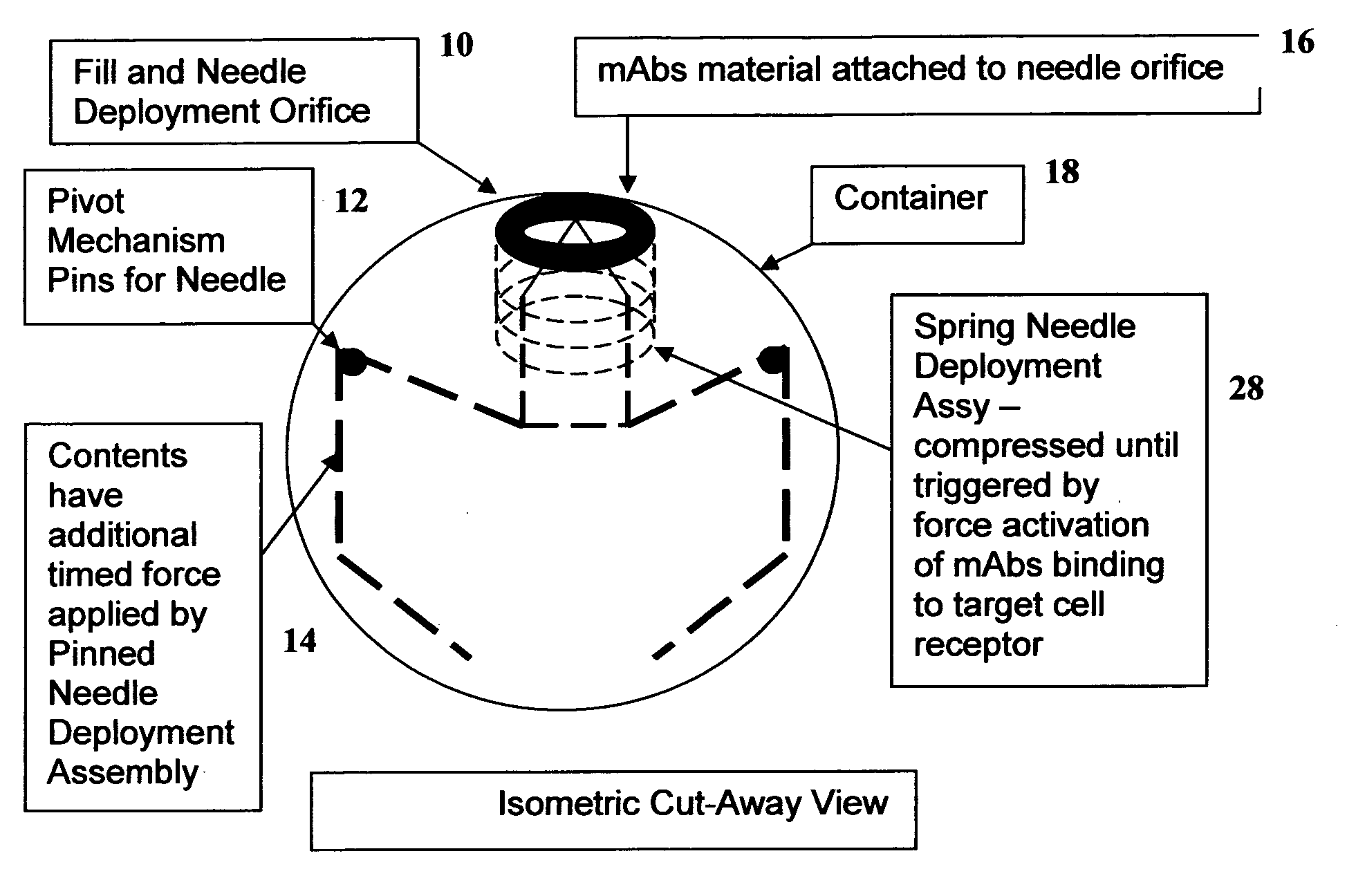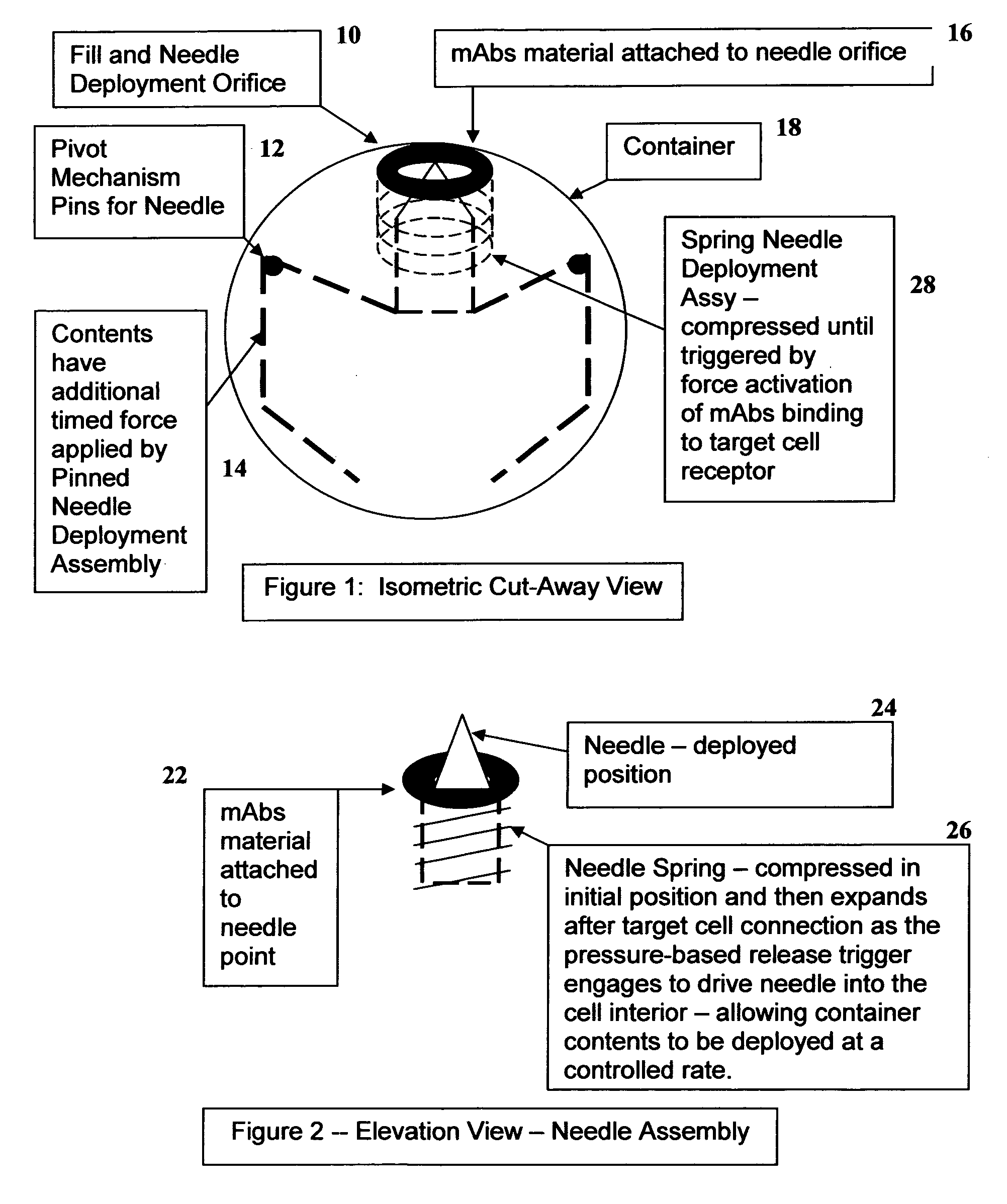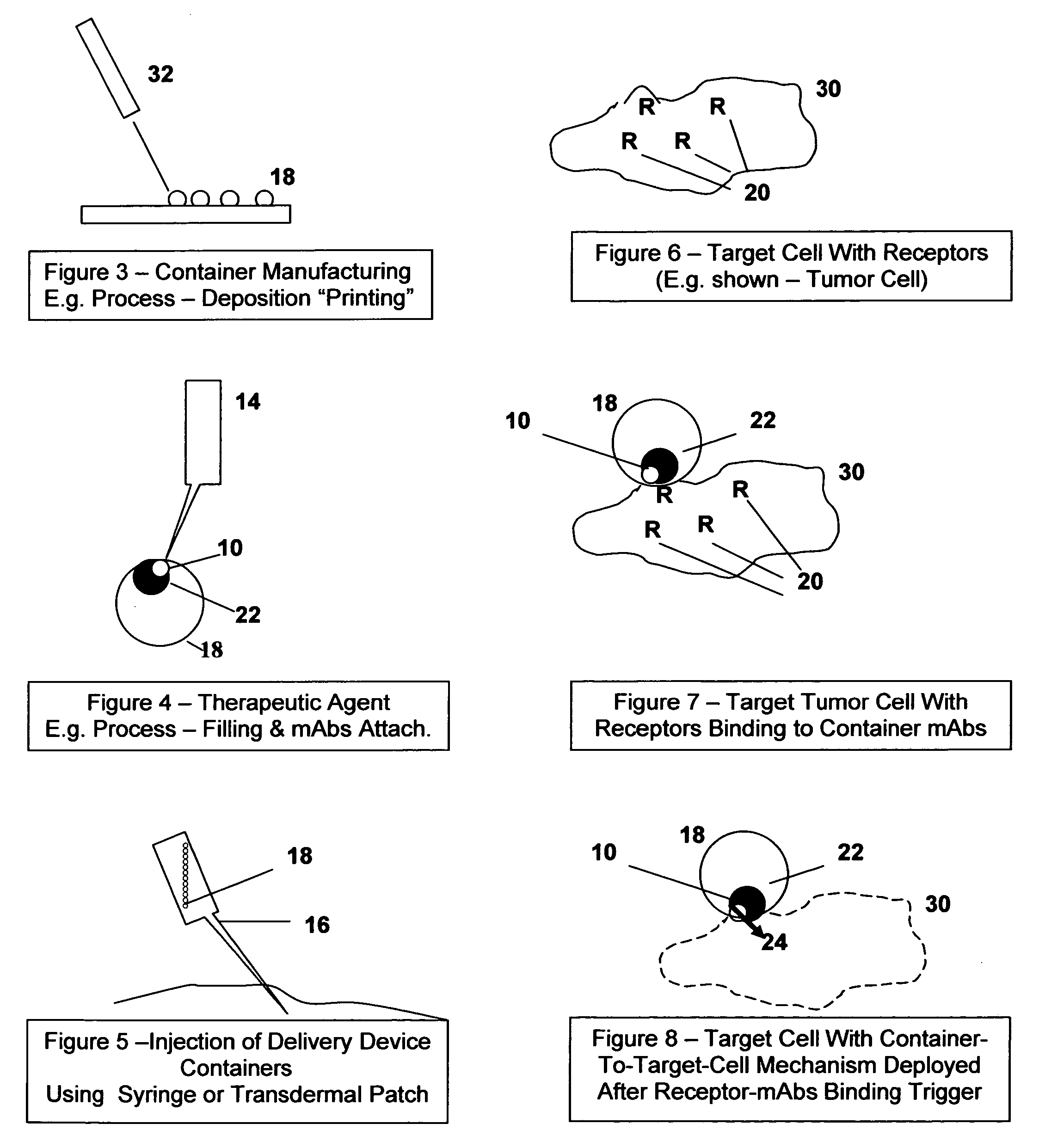If the
cancer has metastasized from the primary site, this approach for finding individual cells becomes very difficult, and healthy cells are often destroyed in the name of trying to get all of the
cancer.
Again, this approach does not contain the capability to
attack every individual problem cell.
The approach requires invasive techniques and does not work well when
cancer cells might have moved from the original
tumor site.
However, the second step,
radiation, is a non-specific approach for killing all cells that it touches.
However, the approach works on large groups of cells without differentiation.
Further, PMMA based bone cements are also not biocompatible materials.
They have clear toxic side-effects caused by leakage of components, such as solvents and non-polymerized
monomer.
These leakages become particularly high for low
viscosity formulations (being inject-able) with high amounts of solvents and monomers.
However, today's bone cements offer no, or very limited, possibilities for the surgeon to control the generated temperature—causing additional side-effects and healthy
cell damage.
However, these
ceramic materials do not offer the means to control the
heat generation through well controlled phase compositions of the hydrating
ceramic, or controlling the temperature by accelerators and retarders—which lessens their overall effectiveness in directly addressing all cancer or problem causing cells for the
whole body.
The clinical use of chemotherapeutic agents against malignant tumors is successful in many cases, but also has several limitations.
These agents do not affect tumor
cell growth selectively over rapidly growing normal cells, leading to high
toxicity and side effects.
Hence, cells are blocked at the G2-M phase of the
cell cycle, leading to apoptotic death.
Despite its
clinical efficacy,
Doxorubicin suffers a major drawback which is common of all chemotherapeutic agents: it is not tumor selective and therefore affects
healthy tissue as well causing severe side effects, including
cardiotoxicity and myelosuppression (Tewek K. M. et al.
While somewhat effective, the process lacks the ability to build up
medicine, chemical or
genetic materials quickly in the target cell—removing the possibility of total eradication or total genetic remediation of the target-cells in a single
dose.
However, mAbs are generally poor pharmaceuticals and are poor cytotoxic agents.
The
chemistry of this approach also limits the makeup of the active substance.
Conjugate approaches do not contain the volume of material to a single target tumor cell needed for killing the cell on a
single application.
These approaches, while effective, can not provide the higher degree of administered material that is required to kill the cell on the first application.
Problems with
drug delivery
in vivo are related to
toxicity of the carrier agent, the generally low loading capacity for drugs as well as the aim to control
drug delivery resulting in self-regulated, timed release.
With the exception of colloidal carrier systems, which support relatively
high loading capacity for drugs, most systems deliver inadequate levels of bioactive drugs.
It is a highly inefficient method, and is faced with even greater problems than the delivery of drugs due to the hydrophilic and labile nature
DNA oligos.
The problems with delivery of genes or antisense oligos originate from the rapid clearance of
plasmid DNA or oligos by hepatic and renal uptake as well as the degradation of
DNA by serum nucleases [Takura Y, et al.
In addition, successful
controlled release is still problematic as for most applications (with the exception of
naked DNA vaccines) it is desirable to have a prolonged expression of the
gene of interest to ameliorate a particular medical condition.
Unfortunately, most of the adsorbed
drug molecules release from such a
system in a relatively short period of time.
However, disadvantages of the process are that high pH (>12.5) could denature most drugs, proteins and DNA, so the process is not suitable for
drug encapsulation vehicles. C. Rey et al., in WO9816209, disclosed a synthetic, poorly crystalline
apatite calcium phosphate containing a biologically
active agent and / or cells, preferably tissue-forming or tissue-degrading cells, useful for a variety of in vivo and
in vitro applications, including
drug delivery, tissue growth, and osseous augmentation.
However, the ratio of Ca / P was limited to less than 1.5, and the authors did not disclose how to fabricate the microspheres and coatings.
While effective for replenishing
stent based therapeutic (usually for
scar tissue prevention in cardiac
artery obstructions) agents over the life of the patient, the approach requires an implanted magnetic
metal object which can be turned on or off via the external
magnetic field—thus it provides no means for addressing individual cells.
 Login to View More
Login to View More 


